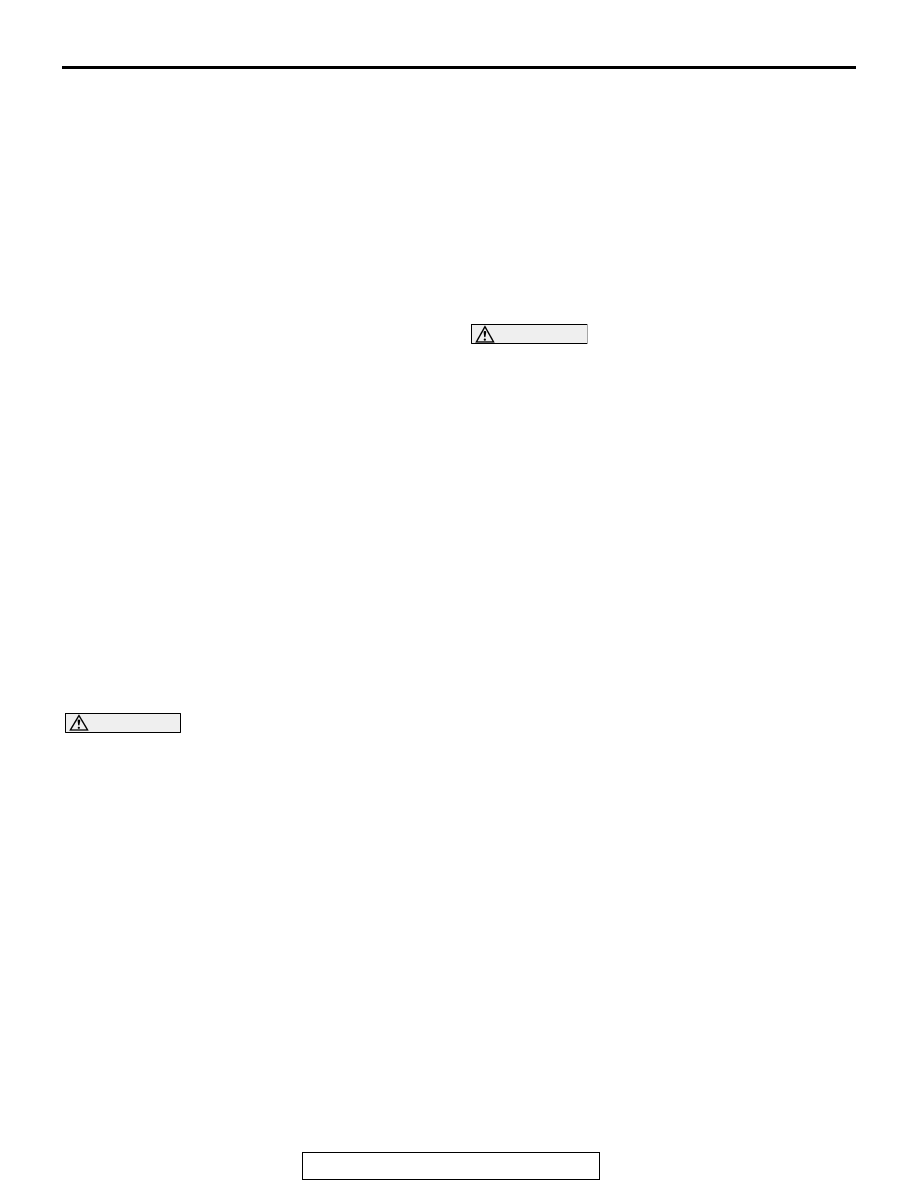Mitsubishi Eclipse. Manual - part 716

HOW TO USE TROUBLESHOOTING/ INSPECTION SERVICE POINTS
TSB Revision
GENERAL
00-7
4. DIAGNOSTIC TROUBLE CODE CHART
If the scan tool displays a diagnostic trouble code,
retrieve an applicable inspection procedure accord-
ing to this chart.
.
5. SYMPTOM CHART
If there are symptoms, even though the results of
inspection using the scan tool show that all diagnos-
tic trouble codes are normal, inspection procedures
for each symptom will be found by using this chart.
.
6. DIAGNOSTIC TROUBLE CODE PROCEDURES
Indicates the inspection procedures corresponding to
each diagnostic trouble code.
.
7. SYMPTOM PROCEDURES
Indicates the inspection procedures corresponding to
each symptoms classified in the Symptom Chart.
.
8. SERVICE DATA REFERENCE TABLE
Inspection items and normal judgement values have
been provided in this chart as reference information.
.
9. CHECK AT ECU TERMINALS
Terminal numbers for the ECU connectors, inspec-
tion items, and standard values have been provided
in this chart as reference information.
.
Terminal Voltage Checks
1. Connect a needle-nosed wire probe to a voltmeter
probe.
CAUTION
Short-circuiting the positive (+) probe between a
connector terminal and ground could damage
the vehicle wiring, the sensor, the ECU, or all
three. Use care to prevent this!
2. Insert the needle-nosed wire probe into each of
the ECU connector terminals from the wire side,
and measure the voltage while referring to the
check chart.
NOTE: Measure voltage with the ECU connectors
connected.
You may find it convenient to pull out the ECU to
make it easier to reach the connector terminals.
Checks don't have to be carried out in the order
given in the chart.
3. If voltage readings differ from normal condition
values, check related sensors, actuators, and
wiring, then replace or repair.
4. After repair or replacement, recheck with the
voltmeter to confirm that the repair has corrected
the problem.
.
Terminal Resistance and Continuity Checks
1. Turn the ignition switch to "LOCK" (OFF) position.
2. Disconnect the ECU connector.
CAUTION
If resistance and continuity checks are per-
formed on the wrong terminals, damage to the
vehicle wiring, sensors, ECU, and/or ohmmeter
may occur. Use care to prevent this!
3. Measure the resistance and check for continuity
between the terminals of the ECU harness-side
connector while referring to the check chart.
NOTE: Checks don't have to be carried out in the
order given in the chart.
4. If the ohmmeter shows any deviation from the
Normal Condition value, check the corresponding
sensor, actuator and related electrical wiring, then
repair or replace.
5. After repair or replacement, recheck with the
ohmmeter to confirm that the repair has corrected
the problem.
.
10. INSPECTION PROCEDURES USING AN
OSCILLOSCOPE
When there are inspection procedures using an
oscilloscope, these are listed here.
HOW TO USE THE INSPECTION
PROCEDURES
The causes of many of the problems occurring in
electric circuitry are generally the connectors, com-
ponents, the ECU, and the harnesses between con-
nectors, in that order. These inspection procedures
follow this order. They first try to discover a problem
with a connector or a defective component.